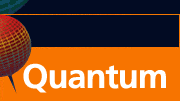CONTACTS
- Coordinator
Sebastian Deffner
-
Quantum Lunch Location:
T-Division Conference Room, TA-3,
Building 123, Room 121
 |


Quantum Institute: Visitor Schedule
The Quantum Lunch is regularly held on Thursdays in the Theoretical Division Conference Room, TA-3, Building 123, Room 121.
The organizing committee includes Malcolm Boshier (P-21), Diego Dalvit (T-4), Michael Di Rosa (C-PCS), Sebastian Deffner (T-4 & CNLS), Changhyun Ryu (P-21) , Nikolai Sinitsyn (T-4), Rolando Somma (T-4), Christopher Ticknor (T-1), and Wojciech Zurek (T-4).
For more information, or to nominate a speaker, contact Sebastian Deffner.
To add your name to the Quantum Lunch email list, contact Ellie Vigil.
Thursday June 4, 2015
12:30 PM - 2:00 PM
Speaker: Marios Tsatos (University of Sao Paulo)
Technical Host: Avadh Saxena
TOPIC: Bose-Einstein condensates beyond the mean-field approach: principles and applications in ultracold atomic gases
Abstract
Bose-Einstein condensation, theoretically known to appear at ultralow temperatures since the 1920s, was achieved in the laboratory only 20 years ago, in dilute bosonic gases at temperatures close to absolute zero. The wide range of applications and controlability of the system parameters has made them unprecedented tools for exploring novel quantum phases and behaviour. The most common theoretical method employed to tackle these complex systems, typically nconsisting of tens of thousands of interacting particles is the celebrated meanfield Gross-Pitaevskii model. Even though it has been proven successful in describing various types of nonlinear excitations it does not take into consideration fragmentation and correlations that can develop in time. I will briefly present a systematic theory, the MultiConfigurational Time-Dependent Hartree for Bosons (MCTDHB) [1] that has been developed in order to solve the many-body Schroedinger equation beyond the mean-field approach and can be in principle exact, and the latest numerical implementation (solver) that is freely distributed in the web [2]. I will then discuss some particular applications in Bose gases possessing angular momentum and interacting vortices and discuss the novel concept of phantom vortices. The latter are topological defects in rotating gases that evade detection in the density of the gas but give their signature in the correlation function. Last I will sketch (near-)future applications of our theory and challenges.
[1] Alexej I. Streltsov, Ofir E. Alon, and Lorenz S. Cederbaum, Role of Excited States in the Splitting of a Trapped Interacting Bose-Einstein Condensate by a Time-Dependent Barrier, Phys. Rev. Lett. 99, 030402 (2007); Ofir E. Alon, Alexej I. Streltsov, and Lorenz S. Cederbaum, Multiconfigurational time-dependent Hartree method for bosons: Many-body dynamics of bosonic systems, Phys. Rev. A 77, 033613 (2008).
[2] A.U.J. Lode and M.C. Tsatsos, The Recursive Multiconfigurational Time-Dependent Hartree for Bosons Package, version 1.0, (2014), http://ultracold.org.
|


